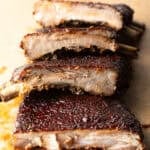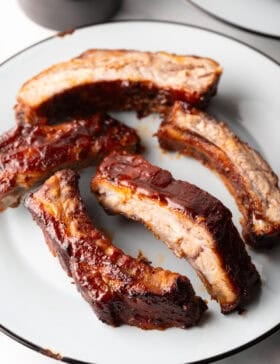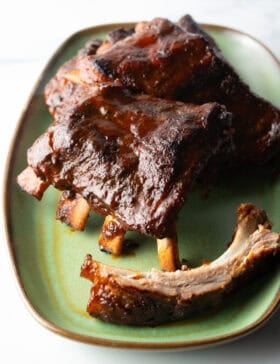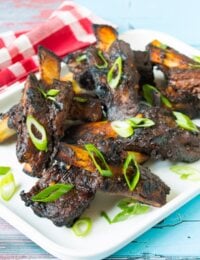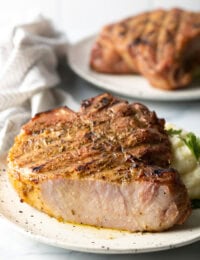St Louis Ribs
Learn how to make the best St. Louis-style pork ribs at home, no matter where you live! Grill or bake them in the oven slathered with Dijon mustard and your favorite bbq sauce for fall-off-the-bone spare ribs that practically melt in your mouth.
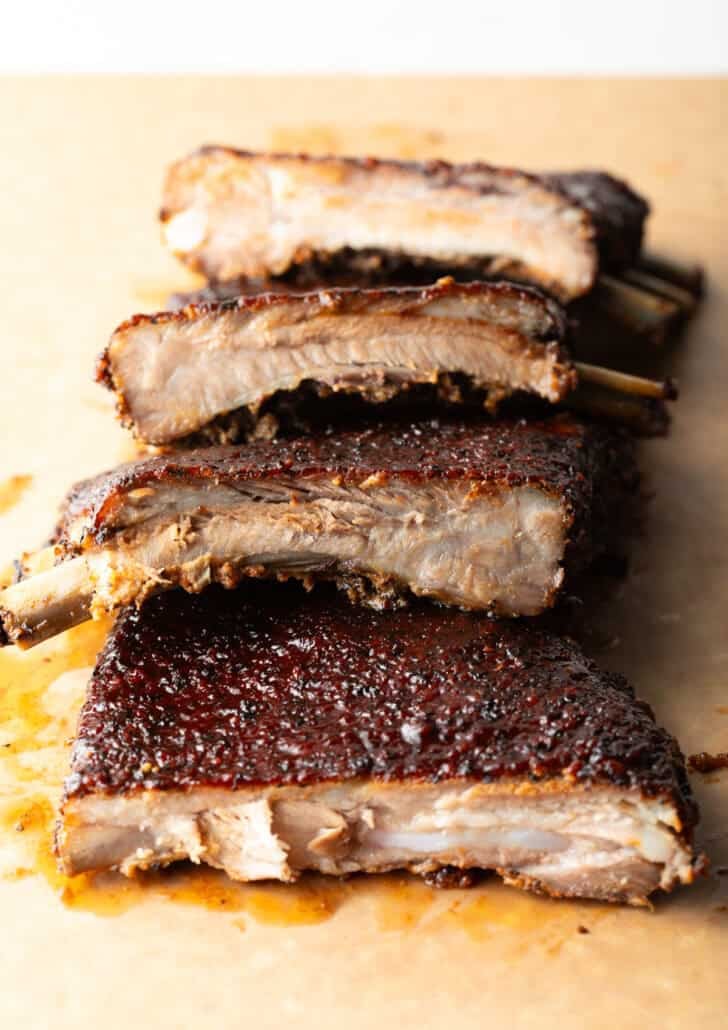

Sommer’s Recipe Notes
Welcome, fellow carnivores! Ok, while we don’t eat meat at every meal – or even every day – I will go straight into 100% meat-eater mode whenever a rack of hot, saucy, melt-in-your-mouth pork ribs is in the picture.
We have several fabulous recipes on the site with various methods to prepare baby back ribs in the oven or grill, or even in an air fryer or crockpot! Today we’re switching to larger St. Louis ribs, which are cut from a whole other side of the pig but just as foolproof to cook.
If you love big, meaty pork ribs, this easy recipe is exactly what you’re looking for!
Why You’ll Love St Louis-Style Ribs
- Be a rib pro – From size and shape to texture and taste, I break down the differences between St. Louis and baby back ribs.
- Oven or grill – I’m showing you both easy methods for how to bake ribs in the oven or cook them on a grill.
- Incredible flavor – With our no-fail recipe, these pork spare ribs are savory, moist, and fall-off-the-bone tender, every time.
The original recipe makes 2-4 servings, but it is easy to double to make extra portions of ribs. As you can see in the photos, I am making a double batch to serve 4-8.
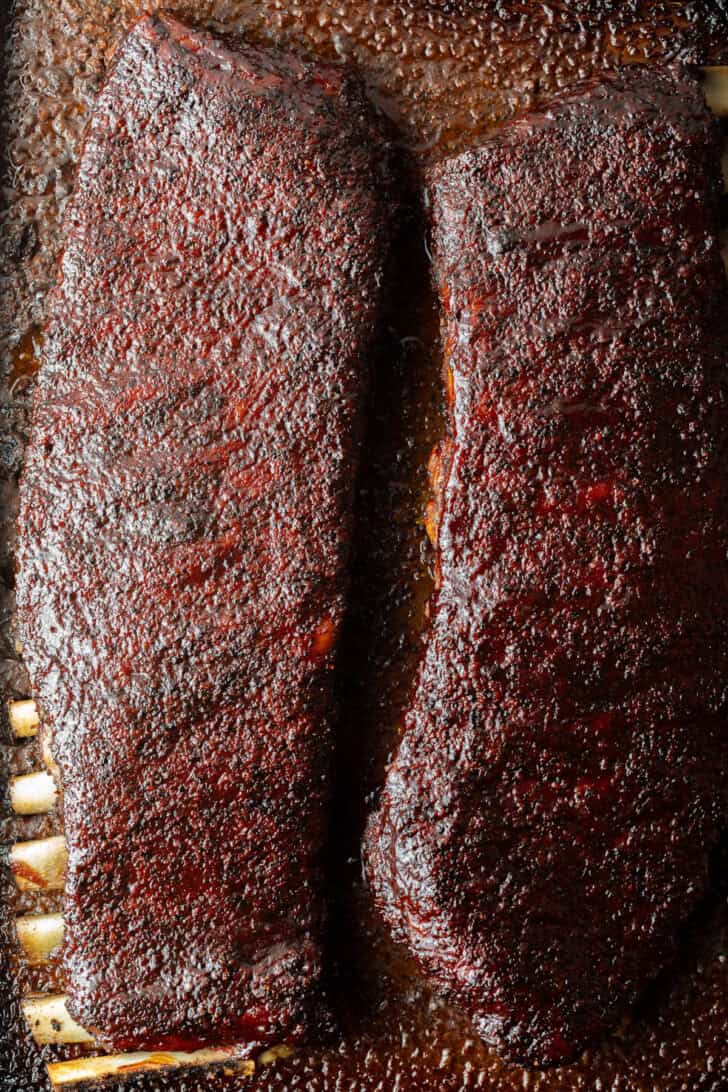
Ingredients and Tips
- Pork ribs – Choose large racks of spare ribs. If you are buying fresh from a butcher, I recommend having them remove the silver skin, since that needs to be cut off anyway.
- Dijon mustard – The tangy flavor of Dijon pairs really well with the sweet pork and the peppery BBQ sauce.
- Pork rub seasoning – Use our homemade pork seasoning, a store-bought BBQ seasoning, or make a quickie rub with: 2 tsp brown sugar, 1 ½ tsp salt, 1 tsp black pepper, ½ tsp garlic powder, ½ tsp cumin, ½ tsp paprika.
- BBQ sauce – Choose your favorite sauce! There is no one best BBQ sauce for ribs, but traditional sweet or peppery sauces, mesquite, and hickory bourbon flavors are great options.
St Louis vs Baby Back Ribs
What’s the difference between baby back and St. Louis-style ribs? There are actually several differences, and we’re breaking them down for you in this handy guide!
Cut of Meat
- St. Louis – The ribs are cut from the larger portion of the ribcage that’s under the belly. This is also the section where bacon is cut from, so the meat tends to include more connective tissue and cartilage. When baked or grilled properly, this collagen-rich tissue and cartilage practically dissolve into the meat, making it extra succulent and flavorful.
- Baby back – Also known as loin back ribs, these ribs are cut from, well, the back. This is the top section of ribs near the spine and loin. There isn’t much fat there, so baby back ribs are leaner.
Size and Shape
- St. Louis – Because they are cut from the wide lower section of the ribcage, these ribs are larger and meatier, usually weighing in at 2.5-3.5 pounds per rack. St. Louis rib bones are also flat, which helps the large cuts cook evenly in the oven or on the grill.
- Baby back – These ribs are shorter and have a curved shape. They only weigh about 1.5-2.5 pounds per rack. But although they are leaner, the ribs are still meaty and mouthwatering!
Texture and Taste
- St. Louis – These cuts are marbled with fat, which, let’s be honest, does make them more flavorful. Cooked low and slow, the fibers break down beautifully as the fat melts into the meat, giving the ribs intense pork flavor and a pleasantly chewy texture.
- Baby back – As noted, smaller baby back pork ribs are rather lean with very little fat. This makes them easier to cook and, even though they have a milder pork flavor, keeps the meat moist and tender.
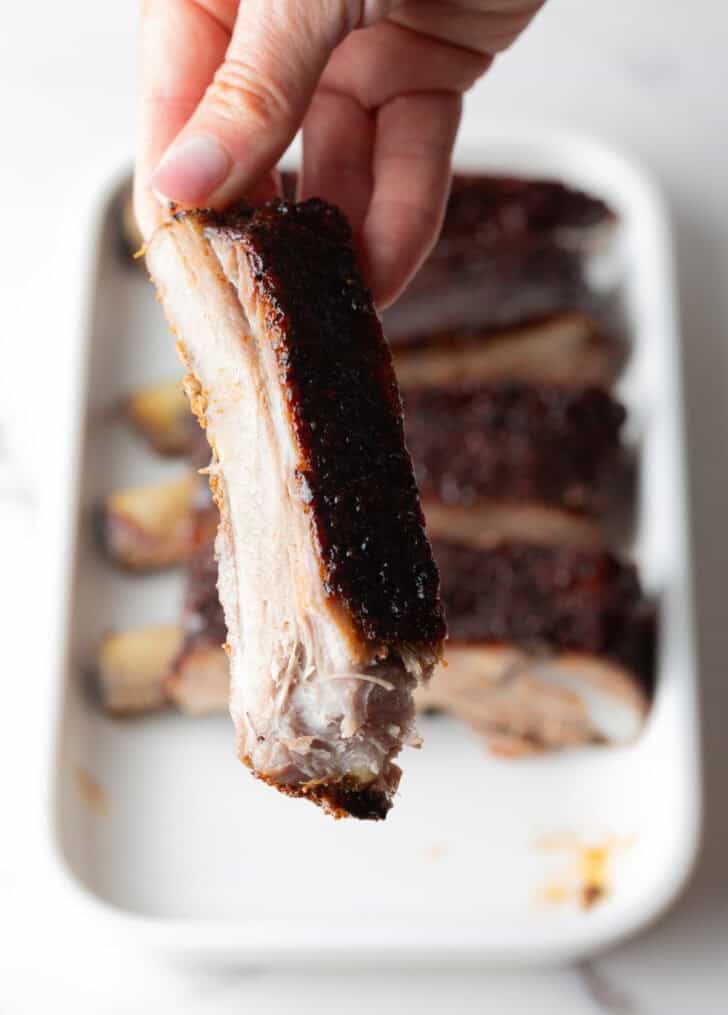
How to Make St. Louis Ribs
Tips for Success – Don’t be tempted to add extra seasoning other than what’s listed – it’s an expensive mistake to make! The ribs absorb flavors wonderfully and can become too salty if you’re overzealous with the pork rub seasoning.
Find the full St Louis Style Ribs recipe with detailed instructions, storage tips, and a video tutorial in the printable form at the bottom of the post.
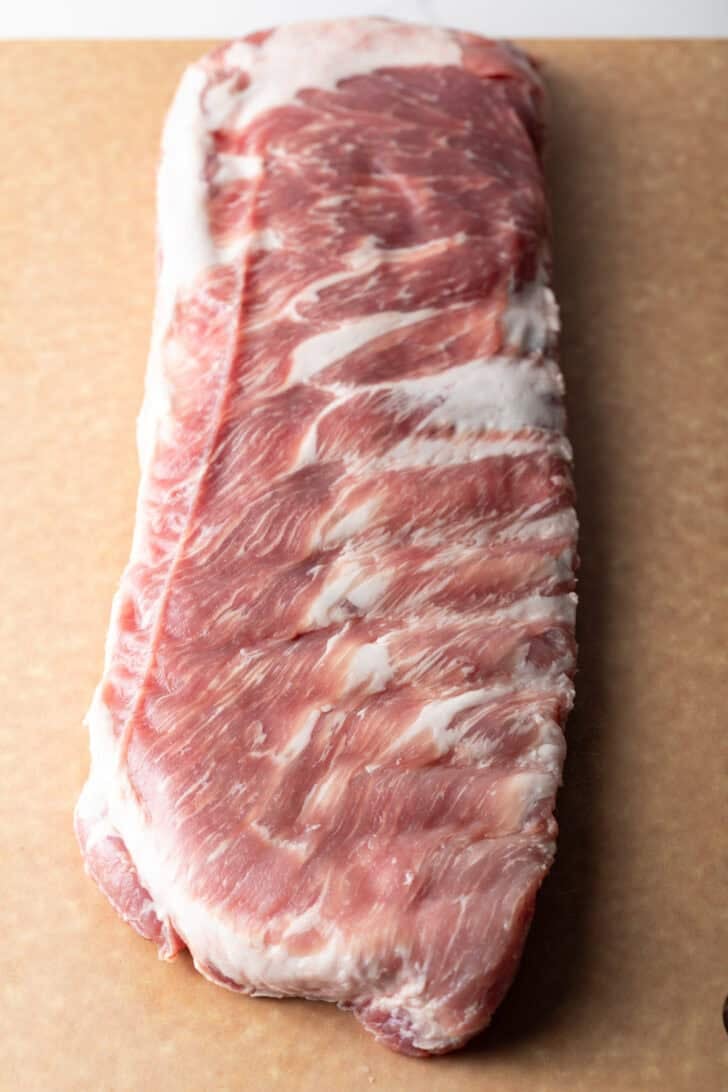
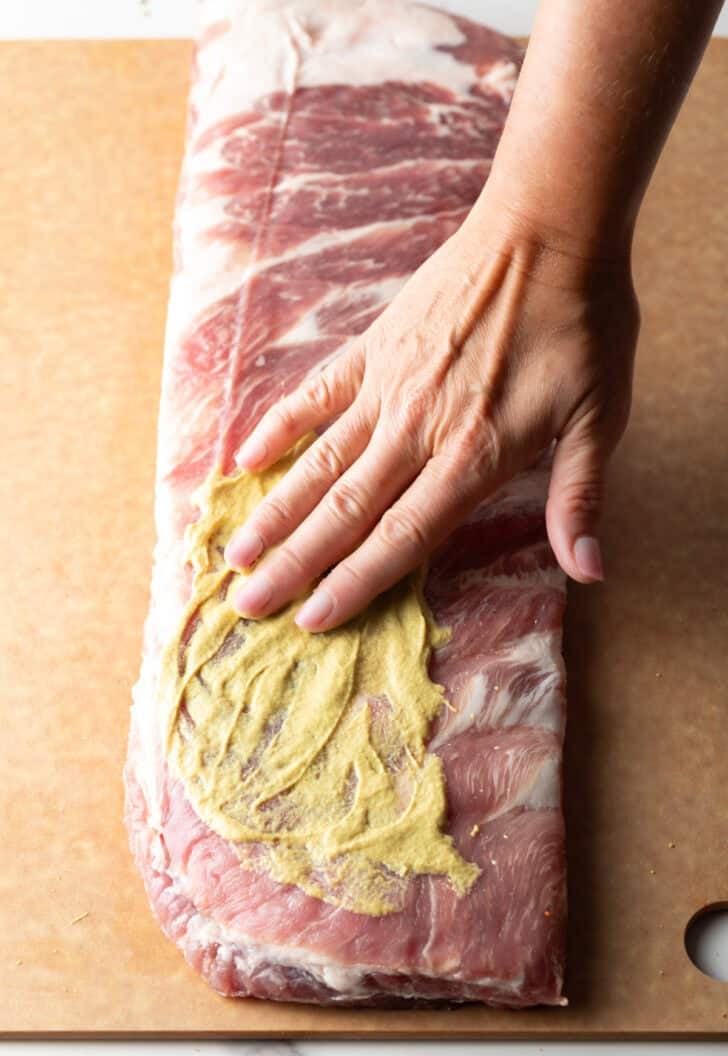
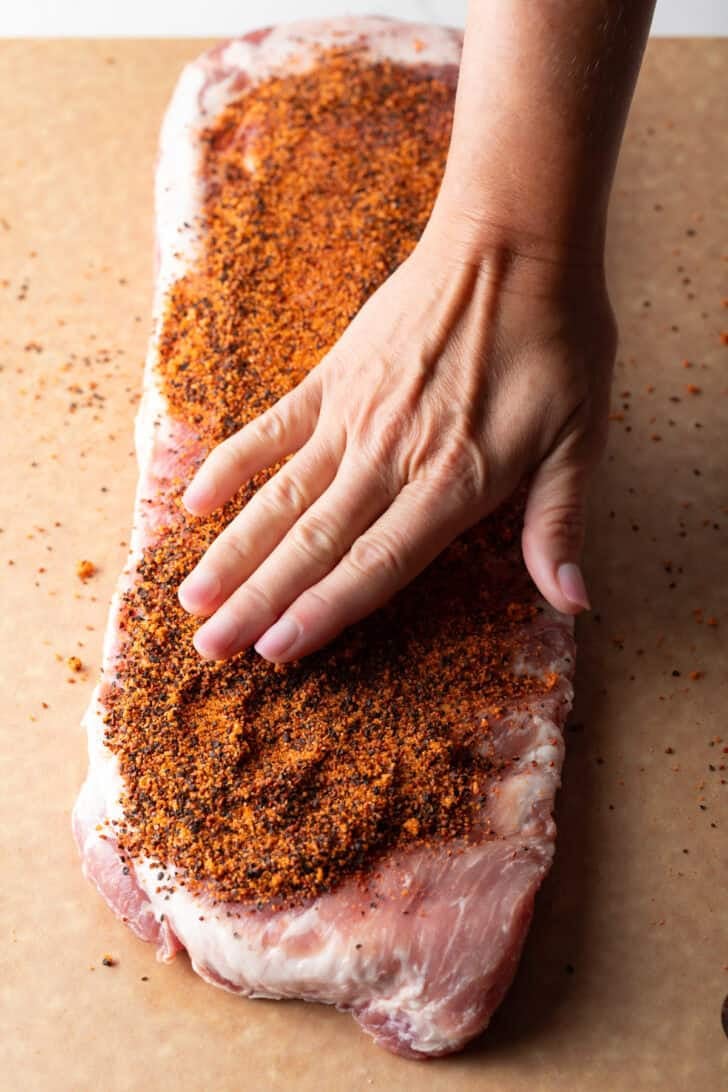
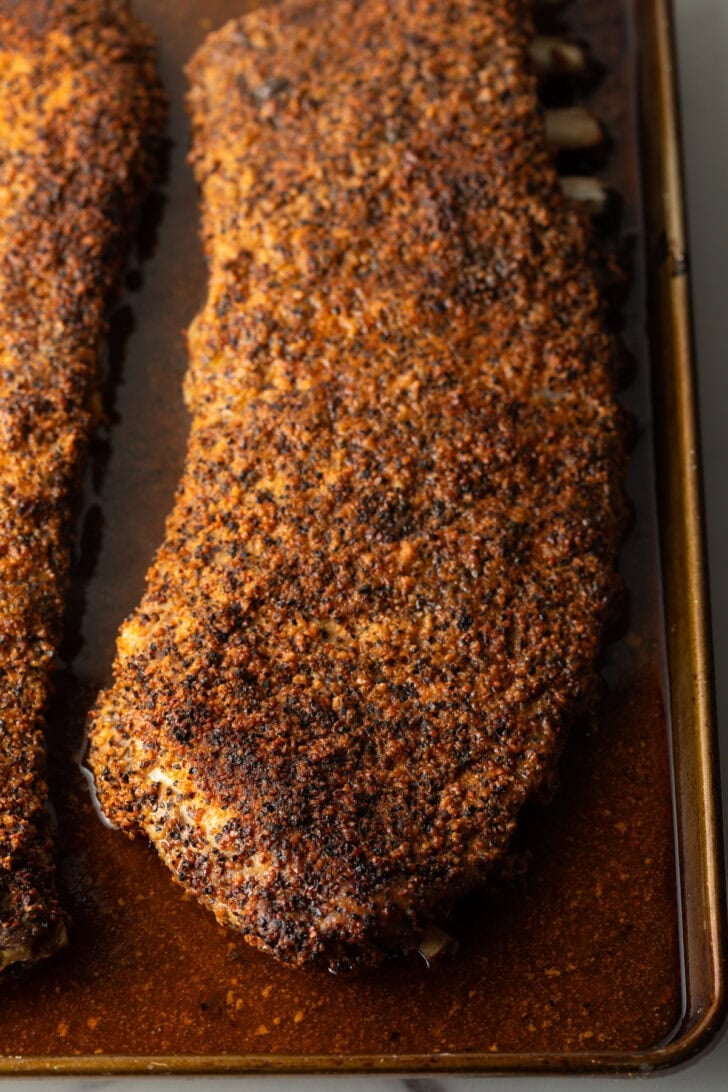
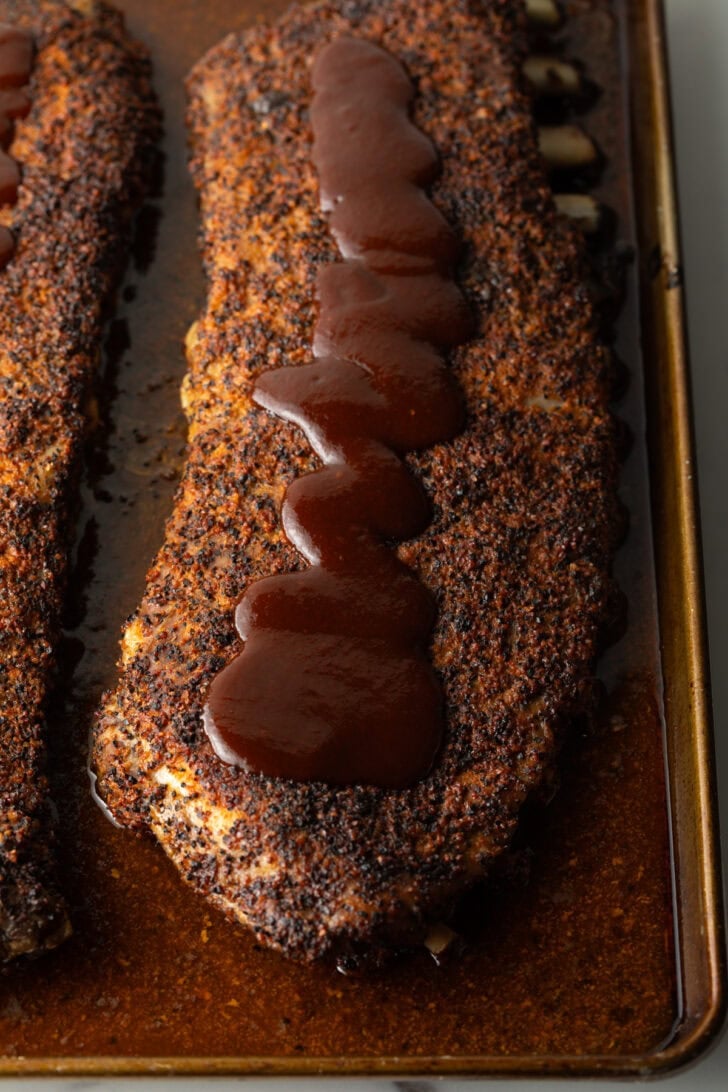
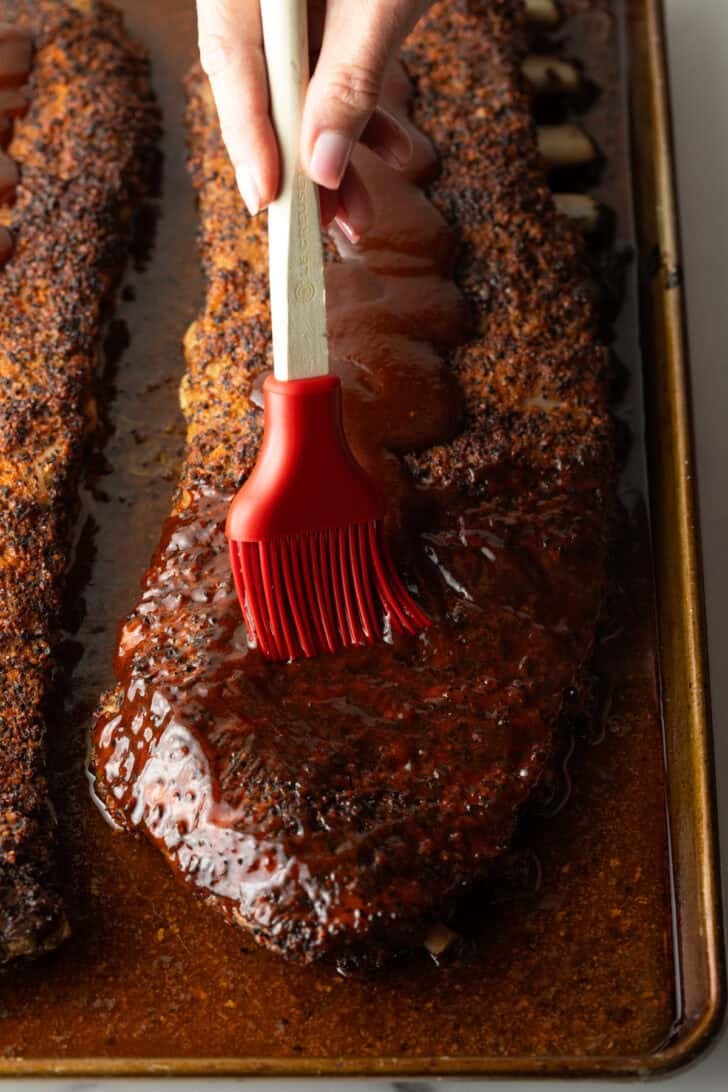
Storage Notes
- Storing Leftovers – Store leftovers ribs together in an airtight container and keep in the refrigerator for up to 3 days.
- Freezing – Ribs freeze well! If they’ve already been cut into individual ribs, wrap each one in a layer of plastic wrap, then bundle together and tightly wrap in aluminum foil. For extra protection against freezer burn, I suggest placing the foil-wrapped ribs in a plastic ziploc bag as well. Store St. Louis pork ribs in the freezer for up to 3 months, and thaw in the fridge overnight before reheating.
- Reheating – Reheat the ribs in the microwave in short bursts at 50% power. Check after each burst to avoid overcooking. Alternatively, you can wrap them loosely in foil and bake them on a baking sheet for 15 minutes or so in a 350-degree oven.
Serving Suggestions
Serve baked or grilled ribs with midwestern side dishes to really enjoy them St. Louis-style. Our cheesy baked company potatoes (AKA funeral potatoes), scalloped potatoes, creamy broccoli salad, and broccoli cauliflower salad recipes are always a big hit!
Since St. Louis is riiiight there next to the south, I totally think you can get away with serving classic Southern barbecue sides as well. Pair the pork ribs with rich homemade mac and cheese, creamy coleslaw, baked beans, and large squares of fluffy sweet cornbread.
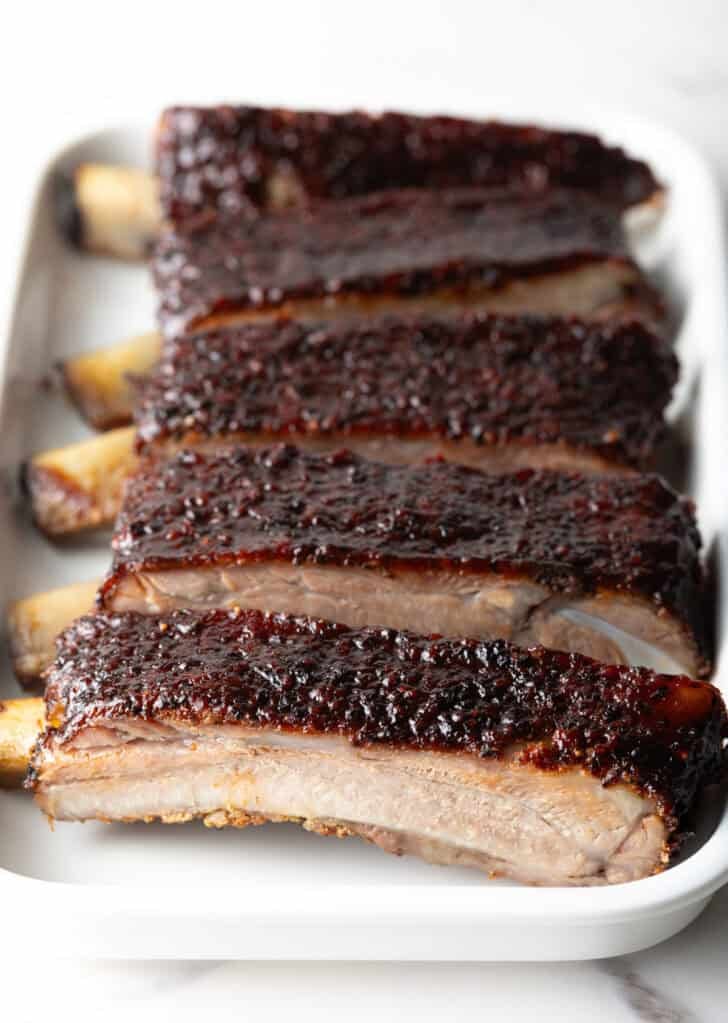
Frequently Asked Questions
No – Leaving it on will make the ribs tough and prevent the seasonings from fully penetrating the meat.
A rack typically yields 10-13 ribs, depending on how it’s trimmed.
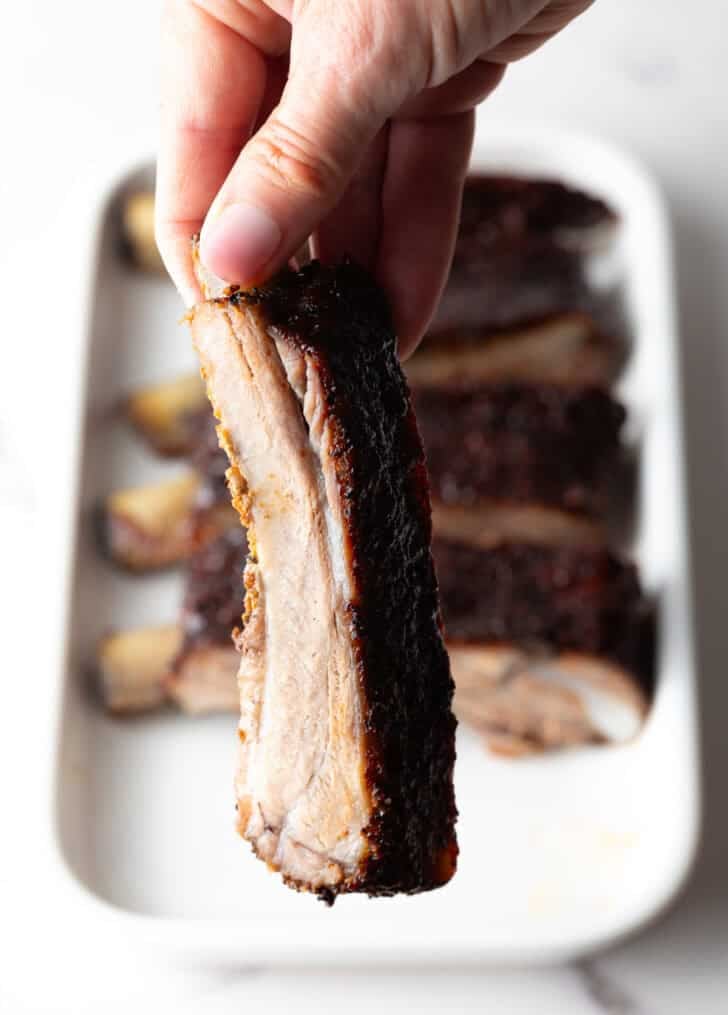
St Louis Style Ribs
Video
Ingredients
- 1 rack st louis pork ribs AKA spare ribs (3-4 pounds)
- 2 tablespoon Dijon mustard
- 2 tablespoons pork rub seasoning
- 1 cup bbq sauce
Instructions
- Remove the silverskin: Flip the rack of ribs over. There is a membrane on the back side of the ribs. Sometimes you can grab the corner of the membrane and pull it off in one large sheet. If this proves to be difficult, take a butter knife and scrape the membrane off the ribs along the edges of each rib bone.
- Season the ribs: Place 2 tablespoons of Dijon mustard on the ribs and rub over both sides. Then sprinkle 2 tablespoons of pork seasoning on both sides. Do not be tempted to add extra seasoning; the ribs hold in the salt and can become too salty!
- Oven method: Preheat the oven to 350°F. Place the ribs on a large rimmed baking sheet. Cover the baking sheet tightly with foil and press around the edges. Bake the ribs for 2 hours.
- Remove the ribs from the oven and turn the heat up to 425°F. Bake the ribs for an additional 10 minutes uncovered, then brush the ribs with ½ cup of barbecue sauce and place them back in the oven for 10 minutes. Take the ribs out again, brush with a second ½ cup of barbecue sauce, and place back in the oven for 10 more minutes. This last uncovered cooking portion creates the "bark" around the exterior of the ribs. Cut and serve.
- Grill method: Preheat a gas grill to 325°F. Wrap the rack of ribs in aluminum foil, and cook for 1 hour, 30 minutes per side.
- Then unwrap the ribs and place them back on the grill top-side-down for 10 minutes. Turn the ribs over, and brush the ribs with barbecue sauce. Cook for another 10 minutes. Continue brushing and flipping the meat every 10 minutes until it has cooked for 1 hour uncovered. The ribs should cook for at least 2 hours total time, but up to 2 ½ hours if they do not seem as tender as you like.
Notes
- Storing Leftovers – Store leftover ribs together in an airtight container and keep in the refrigerator for up to 3 days.
- Freezing – Ribs freeze well! Wrap each individual rib in a layer of plastic wrap, then bundle together and tightly wrap in aluminum foil. For extra protection from freezer burn, I suggest also placing the foil-wrapped ribs in a plastic ziploc bag. Store St. Louis pork ribs in the freezer for up to 3 months, and thaw in the fridge overnight before reheating.
- Reheating – Reheat the ribs in the microwave in short bursts at 50% power. Check after each burst so that you don’t overcook them. Alternatively, you can wrap them loosely in foil, and bake them on a baking sheet for 15 minutes or so in a 350 degree oven.

